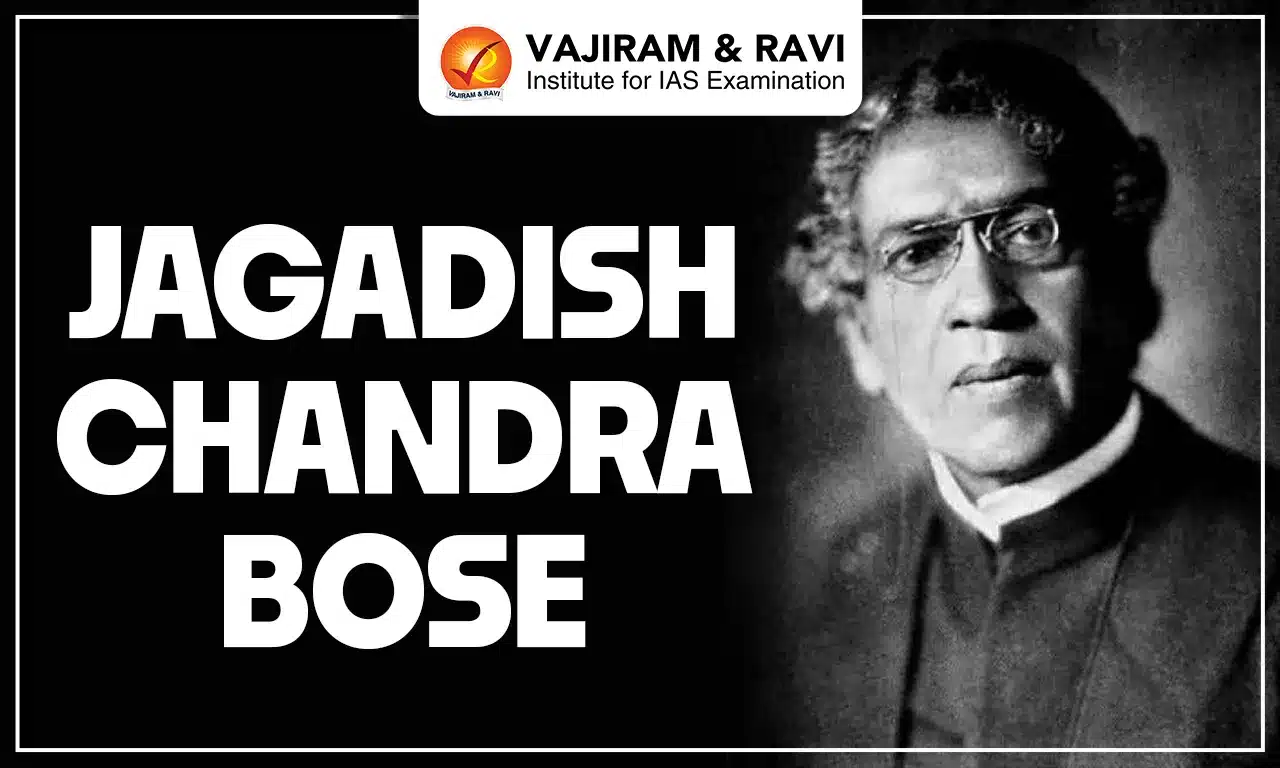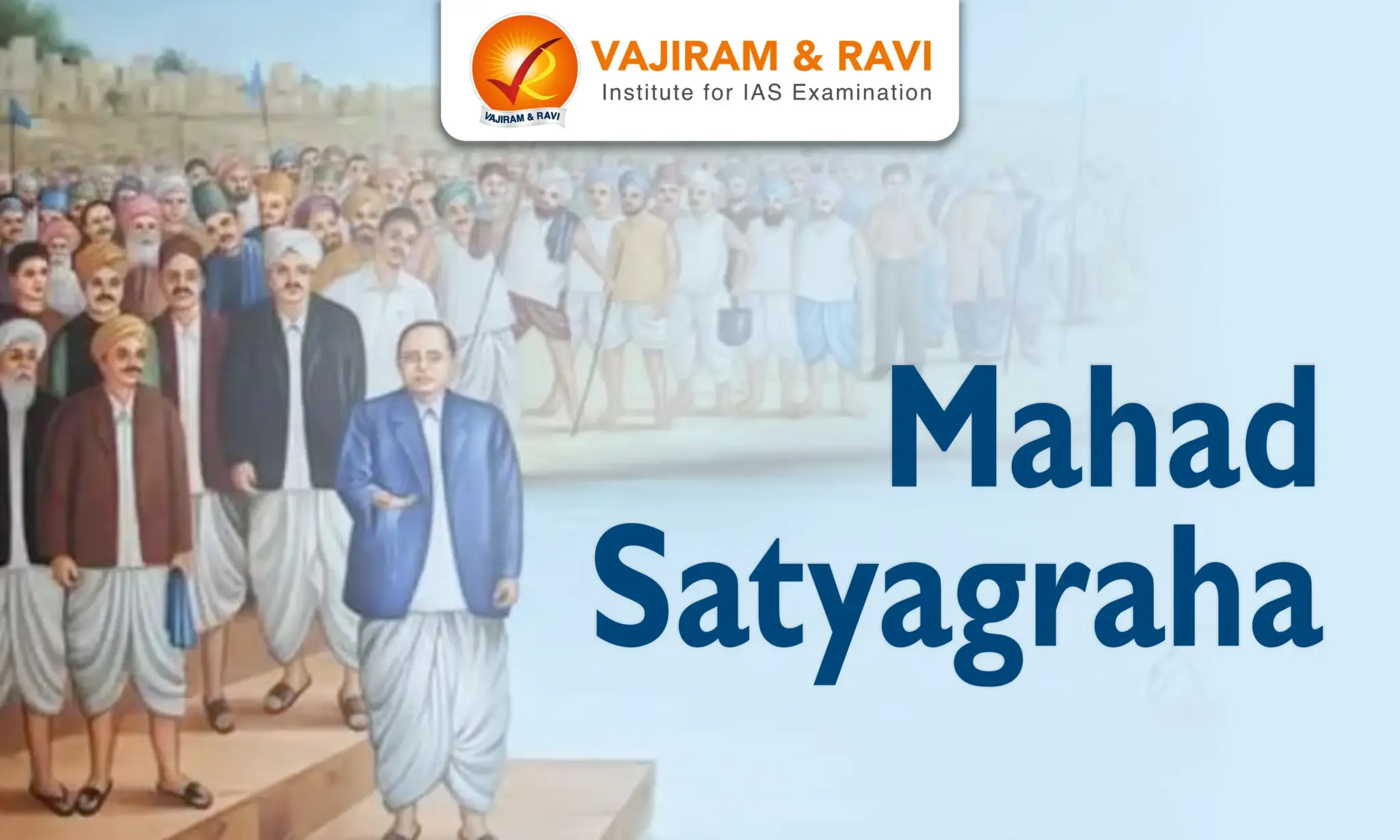Jagadish Chandra Bose was one of the first scientists of modern India, along with Prafulla Chandra Ray (Chemist) and S. Ramanujan (a mathematician), who elevated the nation's status through his experiments and discoveries. He was born in Mymensingh (now in Bangladesh) on November 30, 1858, where he received his early education. Jagadish Chandra Bose attended the University of Calcutta and later the University of London for his higher education in physics and natural science, respectively. Jagadish Chandra Bose was appointed assistant professor of physics at the Presidency College in 1885 and started pioneering research in India.
A polymath with diverse interests in Physics, Plant Physiology and even writing science fiction, Bose is most popularly known for his research on electromagnetic waves and his instruments such as the Crescograph. He founded Bose Research Institute in 1917 at Calcutta, as a centre for study in interdisciplinary sciences.
Contribution of Jagadish Chandra Bose
J.C. Bose decided to become a scientist to recover the fame that India enjoyed all over the world in ancient times. He did pioneering research in India - initially in physics and later in plant physiology.
Contribution of Jagadish Chandra Bose in Physics
- Demonstration of electromagnetic waves:
- Bose, in 1895, exhibited how electromagnetic waves could be sent wirelessly, not just through air but also through walls and even human bodies. Thus, Bose is recognised as the father of radio and wireless communication.
- In his demonstration, the waves at a frequency of 60 GHz travelled around 23 metres.
- This demonstration was one year before Alexander S. Popov’s experiment and two years before Guglielmo Marconi’s demonstration.
- Eventually, Marconi got the Nobel Prize, but Bose couldn't.
- Microwaves and equipment:
- Bose used ultra-high frequency (up to 60 GHz) millimetre waves (between 5 mm and 25 mm of wavelength), that is, microwaves, to show his experiment.
- He constructed novel equipment such as horn antennas, waveguides, and polarizers, essential to modern microwave engineering and astronomy.
- Bose was interested in the optical properties of microwaves rather than the signalling potential of longer wavelengths. This was pioneering work on microwaves.
- At Cambridge University, in a lecture, he even speculated on the existence of electromagnetic waves from the Sun.
- To demonstrate that even metals respond to external stimuli, Dr. Bose also popularised numerous other instruments and called them “Bose instruments.”
- Bose's instruments have demonstrated how even steel and metals used in machinery and scissors can become worn out and regain their effectiveness after a short break.
- Better detection of radio waves: To detect the signal of his own inventions, he invented a new coherer made of a metal cup containing mercury.
- The first patented semiconductor
- Bose’s coherer was in fact a semiconductor diode, and his work led to the world’s first patent on solid-state electronics (diode detectors), which he got in 1904. It was a “galena detector”.
- In this way, he was much ahead of time in solid-state electronics.
- He became the first Asian to receive a US patent.
- He even foresaw the development of P-type and N-type semiconductors.
Contribution of Jagadish Chandra Bose in Plant Physiology
J.C. Bose made some important discoveries in plant physiology. Turning his attention towards the electrical response of living things, he made invaluable contributions to electrophysiology and the inorganic models of biophysical phenomena.
Crescograph:
- He was a pioneer in studying the effect of microwaves on the membrane potential of plant tissues
- He was the first to study how microwaves create changes in the cell membrane potential of plant tissues.
- In this endeavour, he found that both animal and plant tissues respond to electric stimuli (he used electricity rather than chemicals). However, plants show a slower response than animals.
- To measure this response, he invented the crescograph, sensitive enough to catch the slower response by the plant tissues, even the millionth part of a millimetre of plant growth and movement.
- Dr. Bose demonstrated that plants also have a circulatory system using graphs produced by the Crescograph.
- Crescograph has also shown that the upward movement of sap in plants is the activity of living cells.
Inter-disciplinary Research by Jagadish Chandra Bose
Along with being an outstanding physicist, J. C. Bose made a significant contribution by being the first person to ever conduct interdisciplinary research on plants from a physics perspective, a view of life known as an integrated biophysical view.
- His research on coherers helped scientists understand how both living things and inanimate objects respond electrically to external stimuli.
- The understanding of electrical and mechanical responses to stimulation, the transmission of excitation in plant and animal tissues, as well as in vision and memory, were all areas in which he made significant contributions.
- He designed and made a number of novel instruments, including the Crescograph, Photosynthetic Bubbler, and Shoshangraph, which made many of these experiments possible. These were all produced in India, some of them at the Bose Institute.
- "Response in the Living and Non-Living" (1902) and "The Nervous Mechanism of Plants" (1926) are two of his best-known works.
- The latter book was dedicated to Rabindranath Tagore, a legendary poet and Asia's first Nobel laureate.
- In his poems, Tagore expresses his deep admiration for Bose.
Awards and Honours Received by Jagadish Chandra Bose
Due to his ground-breaking investigations, Jagadish Chandra Bose left a lasting legacy in India as well as in the world. He was the recipient of numerous accolades and honours.
- He was made a Knight in 1917 and a Fellow of the Royal Society of London in 1920 for his paper on "The Electromagnetic Radiation and Polarisation of Electric Rays." He was the first Indian scientist to receive this honour in the field of physics.
- In 1928, he became a member of the Vienna Academy of Sciences.
- He was the president of the Indian Science Congress's 14th session in 1927.
- In 1929, he became a member of the Finnish Society of Sciences and Letters.
- Along with Einstein, Curie, and Millikan, he represented Asia on the League of Nations International Committee on Intellectual Cooperation.
- He has a lunar crater named in his honour.
Last updated on November, 2025
→ Check out the latest UPSC Syllabus 2026 here.
→ Join Vajiram & Ravi’s Interview Guidance Programme for expert help to crack your final UPSC stage.
→ UPSC Mains Result 2025 is now out.
→ UPSC Notification 2026 is scheduled to be released on January 14, 2026.
→ UPSC Calendar 2026 is released on 15th May, 2025.
→ The UPSC Vacancy 2025 were released 1129, out of which 979 were for UPSC CSE and remaining 150 are for UPSC IFoS.
→ UPSC Prelims 2026 will be conducted on 24th May, 2026 & UPSC Mains 2026 will be conducted on 21st August 2026.
→ The UPSC Selection Process is of 3 stages-Prelims, Mains and Interview.
→ UPSC Result 2024 is released with latest UPSC Marksheet 2024. Check Now!
→ UPSC Prelims Result 2025 is out now for the CSE held on 25 May 2025.
→ UPSC Toppers List 2024 is released now. Shakti Dubey is UPSC AIR 1 2024 Topper.
→ UPSC Prelims Question Paper 2025 and Unofficial Prelims Answer Key 2025 are available now.
→ UPSC Mains Question Paper 2025 is out for Essay, GS 1, 2, 3 & GS 4.
→ UPSC Mains Indian Language Question Paper 2025 is now out.
→ UPSC Mains Optional Question Paper 2025 is now out.
→ Also check Best IAS Coaching in Delhi
Tags: jagadish chandra bose quest


















